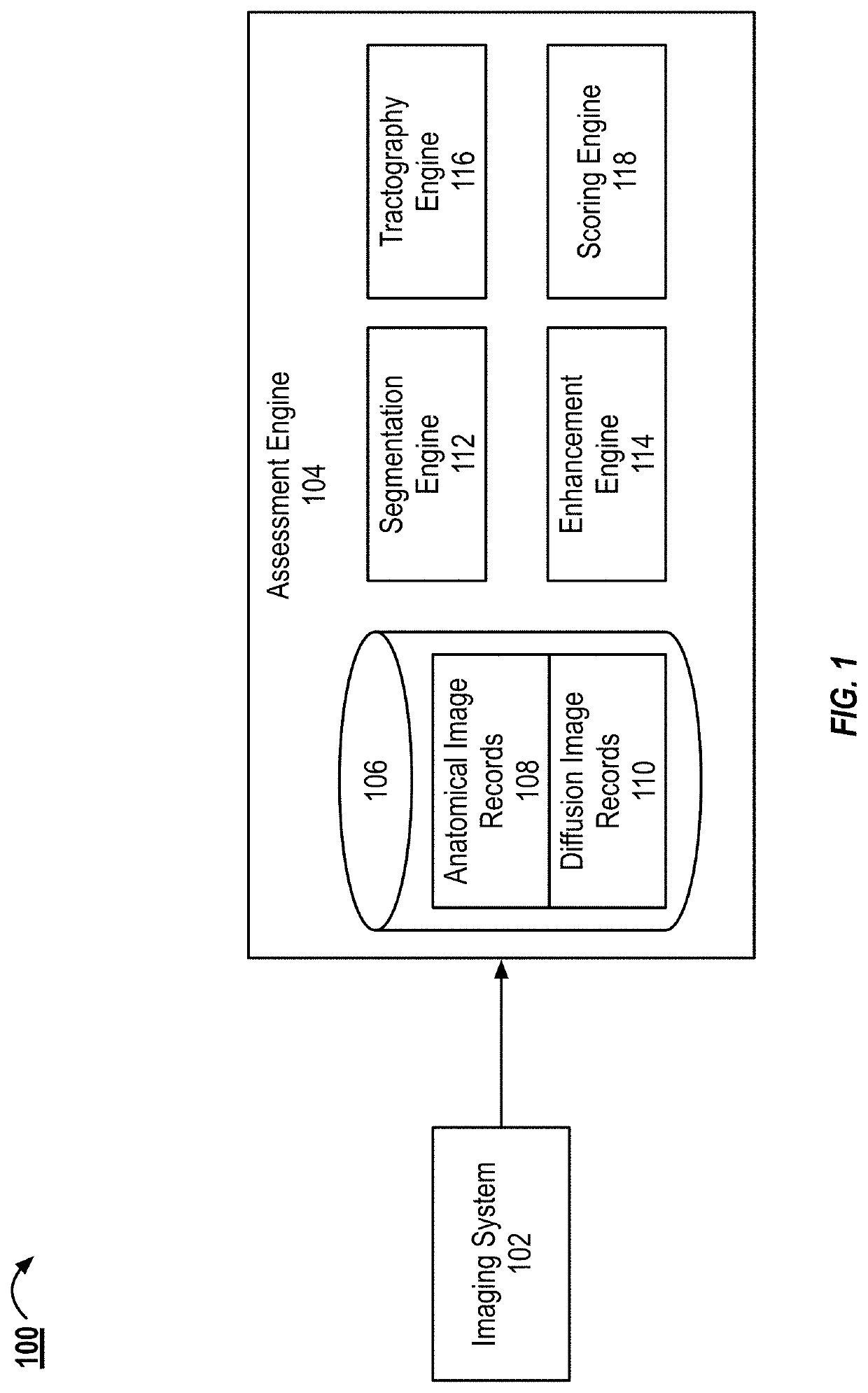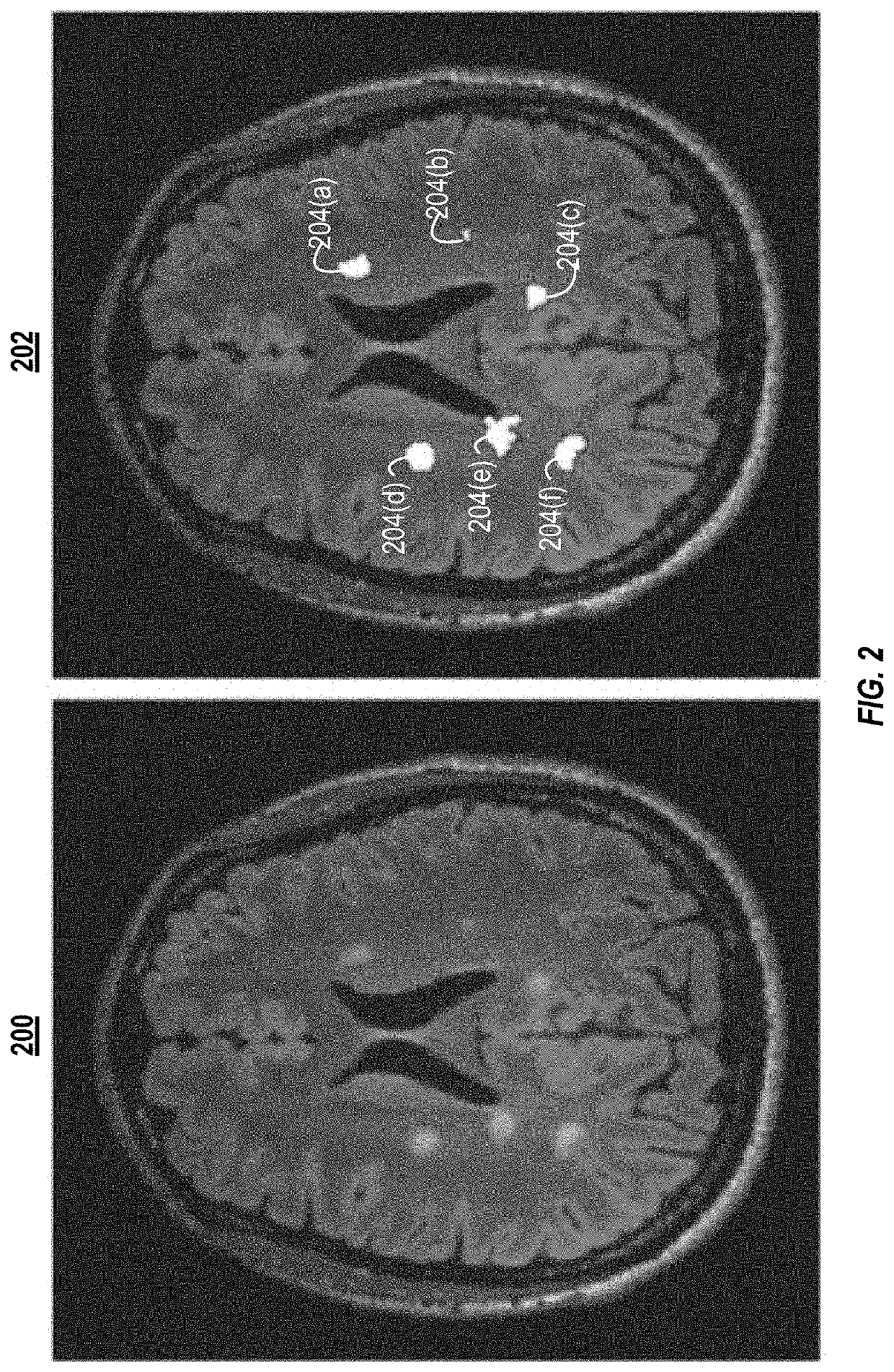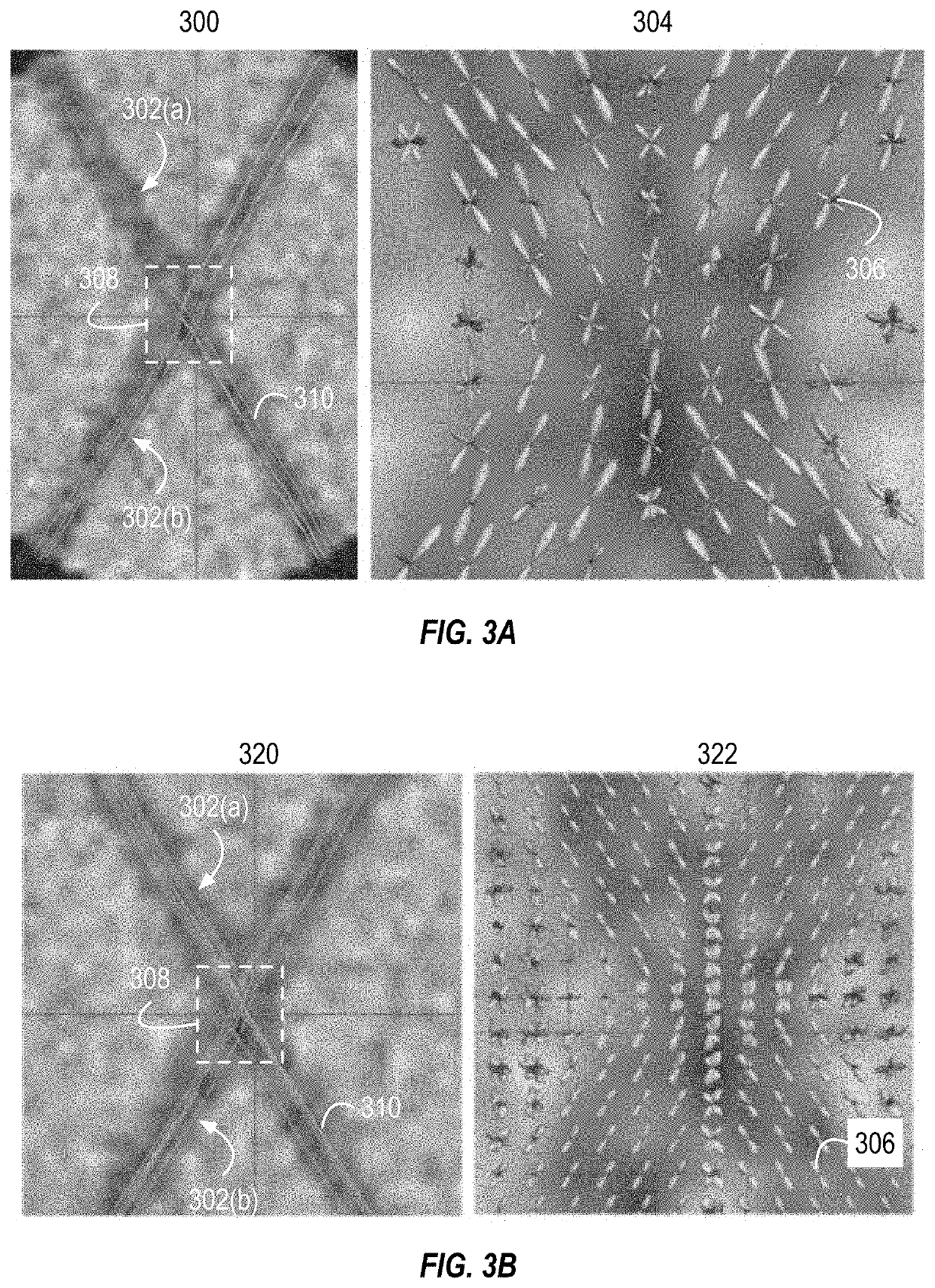Systems and methods for improved tractography images
a tractography and image technology, applied in the field of systems and methods for improving tractography, can solve the problems of limiting the usefulness of tractography in clinical evaluation of patients with neurodegenerative diseases, and difficulty in tractography
- Summary
- Abstract
- Description
- Claims
- Application Information
AI Technical Summary
Benefits of technology
Problems solved by technology
Method used
Image
Examples
Embodiment Construction
[0010]The various concepts introduced above and discussed in greater detail below may be implemented in any of numerous ways, as the described concepts are not limited to any particular manner of implementation. Examples of specific implementations and applications are provided primarily for illustrative purposes.
[0011]The present disclosure discusses systems and methods for identifying biomarkers that can help with the diagnosis, prognosis, and treatment choices of patients with brain diseases, including demyelinating or neurodegenerative diseases, stroke or brain trauma. Patients can be evaluated using clinical scales, but the scales can be based on patient questionnaires making them an unreliable measure between patients and over the course of the patient's disease progression. Diffusion based magnetic resonance imaging (dMRI) techniques often use parameters such as fractional anisotropy (FA), mean diffusivity (MD), and radial diffusivity (RD) that are based on simple models that...
PUM
 Login to View More
Login to View More Abstract
Description
Claims
Application Information
 Login to View More
Login to View More - R&D
- Intellectual Property
- Life Sciences
- Materials
- Tech Scout
- Unparalleled Data Quality
- Higher Quality Content
- 60% Fewer Hallucinations
Browse by: Latest US Patents, China's latest patents, Technical Efficacy Thesaurus, Application Domain, Technology Topic, Popular Technical Reports.
© 2025 PatSnap. All rights reserved.Legal|Privacy policy|Modern Slavery Act Transparency Statement|Sitemap|About US| Contact US: help@patsnap.com



